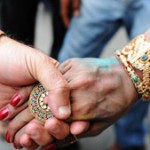In his book, Telling Sexual Stories: Power, Change, and Social Worlds (1995, Routledge), Ken Plummer explains that when individuals narrate seemingly internal and personal stories about their sexuality, these aren’t very individual or internal at all. Rather, such narratives emerge in themes that are made possible due to specific cultural and political conditions; sexual stories are thus part of larger sexual storytelling culture, and can be understood and made meaningful and visible only via existing cultural frames.
In 1995 Plummer documented three kinds of emerging sexual stories: rape stories, coming out stories, and recovery stories. The year of 2009 brought several unique opportunities of its own to tell sexual stories. Some of these stories reaffirmed and revisited familiar plots to “old” sexual stories, while some forged new territory. We have decided to group this year’s stories (which we have selected with a highly subjective and US based lens) into themes; each theme is a compilation of several individual stories, forming what we see as a larger set of cultural stories being told about the pleasures and dangers of sexuality, and the roles of social institutions in regulating and redefining normative sexual boundaries. Thanks to Phil Cohen, Holly Lewandowski, and Amanda Hess for story leads. Also, thanks to RhReality Check’s Amy Newman for her list of top stories from 2009 (from which we borrowed a few).
#10. “Squeaky-clean”-men-who-cheat stories, starring Tiger Woods!
In her recent article on Tiger Woods, Shari Dworkin debunks widespread psychological and “sex addiction” explanations for Tiger Woods’ affairs:
“Recent media coverage of Tiger Woods’ marital “transgressions” is overflowing. Some argue that Tiger is sex obsessed and has a “sex addiction” given his high sex drive and desire for sex with many women over time. Others argue that any sports star who is on the road and away from home so much has a huge chance of being unfaithful to their wife. (Some media reports argue that it is “rare” to find a faithful male sports star). Still others argue that Tiger Woods’ late father pressed him down under his thumb too much as a youngster and upon his death, Tiger unleashed his “wild side.” Finally, some news reporters offer that Tiger was “traumatized” as a child when his father cheated on his mother, and that he must just be paradoxically following in dad’s footsteps. But very little media coverage attempts to press beyond an individual level and not many articles offered a much needed broader analysis of masculinity, race, sport, sexuality, and media.”
 Similar structural and cultural analyses incorporating masculinity and institutional/political power could and should also be applied to the other stars of this story, including: Mark Sanford, John Ensign, & John Edwards.
Similar structural and cultural analyses incorporating masculinity and institutional/political power could and should also be applied to the other stars of this story, including: Mark Sanford, John Ensign, & John Edwards.- Additionally, a cross-cultural perspective is needed here as well (e.g. why are these stories so powerful and shaming in the US, but not in European countries?)
#9. Gay-marriage-success stories, starring: Argentina!

According to The Guardian: “In Latin America policies and attitudes have mellowed over the past two decades and in most countries it is now illegal to discriminate on the basis of sexual orientation. Buenos Aires, Bogota and Mexico City boast gay pride parades and gay-friendly districts where same-sex couples can kiss and hold hands in public. Yesterday Di Bello, 41, and Freyre, 39, became the continent’s first gay married couple. The pair sidestepped a court ruling blocking their wedding in Buenos Aires by holding the ceremony in Ushuaia, capital of Tierra del Fuego province and the world’s southernmost city. They exchanged rings at a civil ceremony witnessed by state and federal officials, prompting jubilation by gay rights activists and consternation from the Catholic church. “My knees didn’t stop shaking,” said Di Bello. “We are the first gay couple in Latin America to marry” (Guardian.co.uk — Dec. 29, 2009).
Gay-marriage- success stories from 2009 also starred: Mexico City, Washington DC, New Hampshire, Sweden, Iowa, Vermont, and Norway. These are just the states, countries, and cities adopting gay marriage in 2009 and doesn’t include the longer list of locales which legalized domestic partnership in 2009. [The appendix to this is the Gay-Marriage-doom-&-gloom story: starring the Catholic Church (Maine) & the Mormon Church (California, from 2008)]
#8. Multiple-birth stories, starring: Angela Suleman (aka Octo-mom!)

While more women are having multiple-baby births (thanks to IVF technology), not all multiple-birth mothers are viewed the same. Kathryn Joyce from RhReality Check offers an insightful comparison between the highly demonized Angela Suleman (“octo-mom”) and a “Reality TV” family with 18 children:
“Suleman’s newborns were delivered, as it were, into a pop cultural moment of preoccupation with large families. Reality TV shows about families with many children abound on TV’s TLC channel, most notably with the chronicles of the 18-child Duggar family. That the Duggars are grounded in and motivated by the pro-patriarchy Quiverfull movement, with its emphasis on female submission and male headship, is breezily dispensed with in favor of dwelling on the sentimental and zany experiences of life in a 20-person family. “Jon and Kate Plus Eight,” another reality TV show about a large family – this one the result of sextuplets born to a mother who, like Suleman, chose not to selectively reduce the number of embryos that “took” during an IVF treatment – is less burdened by the extremist ideology that undergirds the Duggars’ convictions, but still presents a traditional picture of large family life, with married heterosexual parents and a stay-at-home mother. …. While many observers are concerned with her apparent inability to support such a large family, the fact that she is unmarried has alone been cause enough for others to declare her family a situation of de facto child abuse” (for Joyce’s full article click here).
#7. Homo-hater stories, starring: conservative religious anti-gay activists in Uganda and the US!

In a recent post on Uganda’s “Kill the Gays” bill, Kari Lerum wrote that:
“…there is an increasing amount of scrutiny and disgust from many regarding the direct connection between the Ugandan anti-homosexual campaign and a conservative U.S. religious group called “The Family” — which some, including The Observer have called a ” cult” due to the requirement for core members to remain secret about their activities. Regardless of what the group is labeled, it is clear that it has been successful in recruiting high level political leaders including some US congressmen and Uganda’s president Museveni to its core values: “fighting homosexuality and abortion, promoting free-market economics and dictatorship, an idea they once termed ‘totalitarianism for Christ’ ”
#6. Catholic-priest-cover-up stories, starring: the Irish Catholic Church!

As quoted in the LA Times: “Leaders of the Roman Catholic Church in Dublin engaged in a widespread cover-up of abuses by clergy members for decades, a “scandal on an astonishing scale” that even saw officials taking out insurance policies to protect dioceses against future claims by the victims, a commission reported Thursday after a three-year investigation” (see full article here)
Ross Douthat, a conservative writer for the New York Times and the National Review, describes how a culture of fear around sexuality is precisely the kind of culture that produces sexual abuse — and especially cover-ups of sexual abuse. Douthat concludes that:
“…you can see how it could all go bad — how a culture so intensely clerical, so politically high-handed, and so embarrassed (beyond the requirements of Christian doctrine) by human sexuality could magnify the horror of priestly pedophilia, and expand the pool of victims, by producing bishops inclined to strong-arm the problem out of public sight instead of dealing with it as Christian leaders should. (In The Faithful Departed, his account of the scandal, Philip Lawler claims that while less than five percent of priests were involved in actual abuse, over two-thirds of bishops were involved in covering it up.) I suspect it isn’t a coincidence that the worst of the priest-abuse scandals have been concentrated in Ireland and America — and indeed, in Boston, the most Irish of American cities — rather than, say, in Italy or Poland or Latin America or Asia” (see Douthat’s article here).
# 5. Panic-over-sex/gender/sexuality-fluidity stories, starring: Caster Semenya!



In her post in Sexuality & Society, Shari Dworkin writes, “While Caster Semenya’s recent “news” seems to have shocked the world, the concern about “gender verification” in sport has taken place for quite some time. The tests have changed over time…but the point has not (e.g. when women are “too good,” they must not be women). …” (see also sociologist Philip Cohen’s story about Semenya, and an update on Caster’s status in the NYT). Note that in these stories there are never any calls for parallel sex verification tests to see if men they are “too much of a man,”—a man that no other “normal” man can hope to “fairly” compete with. This is because of the specific role that sport has historically played in terms of making boys into men (when women compete, there have been numerous fears that they are masculinized and are not “normal” women).
This year’s sex/gender/sexuality-panic stories also starred: Morehouse College‘s dress code, a high school girl wearing a tux, & a 4 yr. old boy kicked out of preschool for having “long” hair.
# 4. Harsher punishments for-sex-with-minors stories, starring: Roman Polanski!

Filmmaker Roman Polanski was arrested in 1977 for the sexual assault of a 13 year old girl. He spent 42 days in a California prison and was released. Upon hearing of a judge’s plan to have him serve more time and possibly deport him, Polanski fled to France. In 1988 Polanski was sued by the girl he assaulted and in 1993 settled with a payment reported at around $500,000. In the years that have passed Polanski also married (in 1989), had two children, and continued on as a prolific and well regarded film maker. For reasons that are still murky in terms of timing, Polanski was arrested on Sept. 26, 2009 (32 years after the crime) at the Zurich, Switzerland airport at the request of US authorities. Polanski’s case, spanning decades and continents, offers an insight into how laws and attitudes about sex with minors has changed in the US:
The LA Times reports that “(s)tatutory rape convictions similar to Roman Polanski’s typically result in sentences at least four times longer today than the 90-day punishment a judge favored before the director fled the United States in 1978, a Times analysis of Los Angeles County court records shows. Polanski’s arrest in Switzerland on an international fugitive warrant — and his pending extradition proceedings — have sparked transatlantic debate about whether the 76-year-old Academy Award winner should serve additional time behind bars for having sex with a 13-year-old girl….The Times analyzed sentencing data to determine how L.A. County courts today handle cases in which men admit to statutory rape — also known as unlawful sex with a minor — in exchange for the dismissal of more serious rape charges, as Polanski did. The findings show that those defendants get more time than Polanski has served — even factoring in his 70-day stint in Swiss detention — but less than his critics may expect. … “Thirty years ago, sexual assault — rape and sex crimes — were treated differently,” said Robin Sax, a former sex crimes prosecutor for the L.A. County district attorney’s office. “Time and education haven’t worked for Polanski’s benefit.”
Sociologist Barry Dank, founding editor of the Journal Sexuality & Culture, has blogged extensively about the Polanski case. Dank writes:
“There is no question that what Roman Polanski did to a 13 year old girl in the 1977 was wrong, and illegal. But it is also wrong to drag Polanski back to the US 31 years after the crime and have him spend an unspecified amount of time in prison. What possible good would come about by Polanski doing time for the crime? Obviously, it would not function to rehabilitate him or change him in some way. The fact that Polanski has had a stellar film career and apparently lived a law abiding life for 32 years after the crime is indicative that the case for changing Polanski is simply irrelevant.”
The details of Roman Polanski’s case lies in stark contrast to the case of Phillip Garrido, a registered repeat sex offender who was arrested earlier this year for kidnapping 11 yr old Jacee Dugard, and holding her captive and sexually abusing her for 18 years (from 1991-2009). The young Dugard bore two children out of Garrido’s abuse (now ages 11 and 15).
Despite today’s more stringent punishments for statutory rape, we hope that US jurors and judges will be able to distinguish the vast differences between the sexual crimes of Polanski and Garrido.
# 3. No-condoms-for-those-who-need-it-most stories, starring: Pope Benedict XVI!
While HIV/AIDS rates in sub-saharan Africa continue to soar, and condoms are very effective in fighting HIV/AIDS (when used correctly and consistently) Pope Benedict told Africans that it was wrong to use condoms.
The Pope’s message was also heard in the US, at least among some US Catholic college students. Amanda Hess, writer for the Washington City Paper highlights how all 3,000 students at Catholic University are now prohibited from having sex that is “disruptive” (defined as “ANY” sexual expression inconsistent with the Catholic Church including premarital sex and same sex sexuality). These rules are written into the code of student conduct. Hess states that:
“Deference to the catechism spares Catholic administrators from the awkward enterprise of referring to masturbation, condoms, or any other specific of a typical undergraduate’s sex life” … “violations to the student code can’t be absolved in typically Catholic fashion, with forgiveness administered privately after confession to a priest. At the Catholic University of America, your sins are subject to judicial review” (click here for full article).
Clearly, if the Catholic church cannot discuss sex outside of sex within marriage, they cannot discuss condoms very effectively.
#2. Backlash-against-sexual-&-reproductive-justice stories, starring: the murderer of Dr. George Tiller!
Gosh, this story is soooo last century (the 80s and 90s were full of anti-abortion terrorism stories), but unfortunately it’s still a story in 2009.

Dr. George Tiller, a doctor who provided late term abortions in Wichita, Kansas, was shot dead while attending Sunday Church services. Jodi Jacobson, Editor of Rh Reality Check explains the importance of Dr. Tiller’s work, as well as the cultural context for how perceptions of his work are widely inaccurate:
“In all the extensive coverage of the assassination in his church of Dr. George Tiller by a murderer affiliated with extremist right-wing groups, little has been said to shed light on what late-term abortions are, who has them and why. Instead, much of the media and talking heads pontificating on this subject have constantly focused on Tiller’s being “one of the very few doctors who perform late-term abortions,” without providing any context as to why he did so and under what circumstances. As a result, the dominant narrative is one which perpetuates an assumption that people are electing to have late-term abortions for the sake of convenience.” (To read Jacobson’s entire analysis, click here).
And finally, we’d like to end on a positive note, with a list of sexual and reproductive justice stories from 2009:
1. Sexual-&-reproductive-justice stories, starring Barack Obama!
Obama signed and/or was involved in the following sexual health and justice developments:

- Repeal of the Global Gag Rule
- Ending the HIV Travel Ban
- Affordable Birth Control Act
- Emergency contraception available to 17 year olds without a prescription
- Critical funding for sexual and reproductive health programming
- Supported starting a large prevention campaign to end HIV/AIDS in the African-American community. He formed a campaign called “Act against AIDS” and also formed an Act Against Aids Leadership Initiative AAALI) that partners with 14 of the nation’s leading African-American civic organizations in order to “integrate HIV prevention into each organization’s outreach programs.” The program refocuses national attention on the AIDS epidemic and features a media campaign called “9 1/2 minutes,” to draw attention and visibility to the fact that every 9.5 minutes, someone in the USA is infected with HIV.
And although this last bill still needs to be signed, we are expecting Obama to:
- fulfill his promise to fund evidence-based, scientifically based sex education.
As Kari Lerum noted in a recent post, “the movement toward more abstinence-only approaches is driven almost entirely by conservative religious ideology, not scientifically reliable evidence.” Because of the lack of scientific credibility for Abstinence-only sex education, we are hopeful that all funding for abstinence-only sex education will finally be eliminated from the US Federal budget.
We are intrigued by many of this year’s sexual stories, saddened by some, and encouraged by others. May 2010 be filled with opportunities to reframe old (sexist, racist, homophobic, and sex-negative) stories into sexual stories that involve measured discussion of sexual health, sexual justice, and sexual rights.
Kari Lerum & Shari L. Dworkin, Eds. Sexuality & Society.



 While Castor Semenya’s recent “news” seems to have shocked the world, the concern about “gender verification” in sport has taken place for quite some time. The tests have changed over time…but the point has not (e.g. when women are “too good,” they must not be women).
While Castor Semenya’s recent “news” seems to have shocked the world, the concern about “gender verification” in sport has taken place for quite some time. The tests have changed over time…but the point has not (e.g. when women are “too good,” they must not be women).


